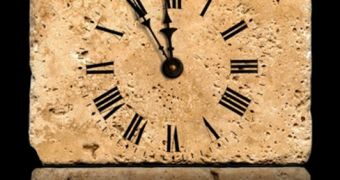For many years, one of the main challenges in the field of geochronology was that different specialized labs around the world used various approaches, standards and methods to conducting their measurements on the age of rocks, which led to different results.
As part of an international research initiative, a team of investigators has now produced and distributed to selected labs across the globe a standardized set of procedures and approaches, which use a so-called “community tracer.”
The initiative is called EARTHTIME, and is primarily funded by the US National Science Foundation (NSF). The new standards and recommendations were produced by a team of geochronologists,
This field of research is basically the science of telling how old rocks and other materials are. It is of extreme importance for a wide array of studies, related to planetary sciences, extinction events, Earth's ancient history and so on.
Geologists want for example to know for sure when asteroid impacts struck, or even continents were formed, or how long it took for a large mountain range to erode. In order to do that, they need to know precisely how old the rocks they are looking at are.
But accurate dating using different techniques and laboratories is very difficult, and so the need for a standardized approach developed.
Rock studies are generally carried out by measuring the amount of radioactive elements inside, or by looking at the chemicals these elements turn into, if given enough time.
In order to do that, geochronologists use what is called a tracer, which is basically a solution that contains synthetic radioactive elements. The issue is that different labs and research groups use different traces.
As part of the EARTHTIME initiative, investigators led by Massachusetts Institute of Technology (MIT) expert Sam Bowring have created a new tracer, which will from now one be used at all the top analysis labs in the world.
Bowring is the Robert R. Shrock Professor of Earth and Planetary Sciences at the Institute's Department of Earth and Planetary Sciences.
“Absolute dates hold the answers to when – and how fast – something occurred, which helps to sort out cause-and-effect relationships that may otherwise be purely speculative,” explains Noah McLean, who is a doctoral student in Bowring’s Radiogenic Isotope Lab at MIT.
“In the past, it has been impossible to know whether slight differences in ages reported by different labs have actual geologic meaning or instead result from inaccurate tracer calibration within individual labs,” adds University of California in Santa Barbara (UCSB) geologist James Mattinson.

 14 DAY TRIAL //
14 DAY TRIAL //